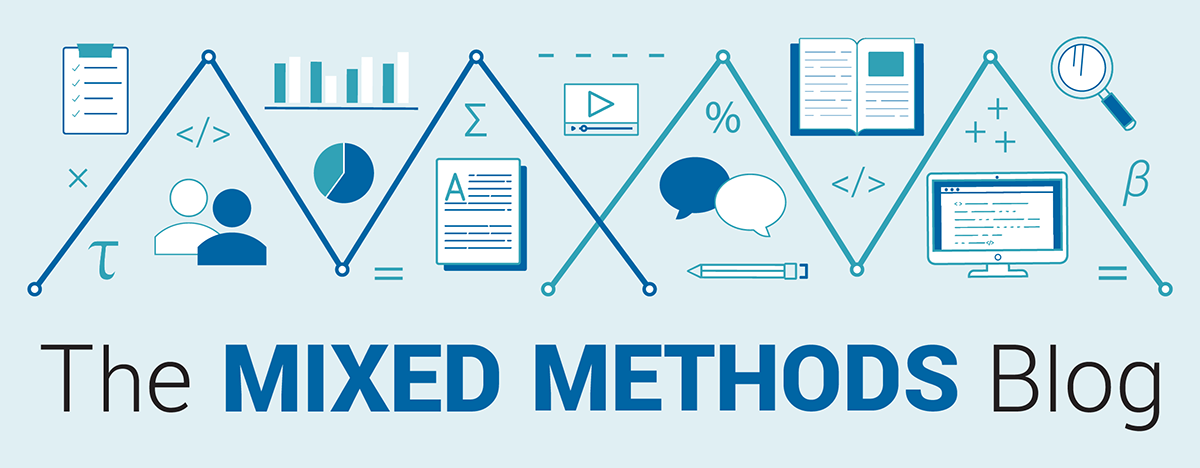The Mixed Methods Blog
Guided Pathways Reforms Designed With Equity in Mind

Higher education institutions can and often do further contribute to inequities, so it’s our responsibility as researchers and practitioners to identify what mechanisms are leading to systemic inequities and work to recreate these institutions so students who have historically been marginalized flourish.
As guided pathways researchers, we have asked ourselves how these reforms relate to issues of educational equity and what the potential of these reforms is when designed with equity in mind. Guided pathways is a reform that encourages colleges to not just “open the door” to a more diverse student body but create the conditions for students to see a broader range of opportunities for themselves and then help students successfully realize those opportunities.
This leads us to look at student success from an economic and social justice angle and to ask questions such as:
- What programs are your students are enrolled in, what programs do they complete, and what do those programs lead to?
- What potential does your institution have to provide economic opportunities to communities that typically do not have those opportunities?
- Where are your students going after they leave community college, and how can you set them up for their next steps?
We also focus on students’ experiences in their programs and ask which students are underserved and what barriers the college creates. We similarly consider how colleges can learn more about groups that are underserved and then direct supports to them.
The potential for guided pathways to positively impact equity
When we look at students’ journeys through community college, we see a great deal of inconsistency. At some moments, some students may receive adequate support. But many get uneven and inadequate support and guidance, and there are many opportunities for them to fall between the cracks.
In an effort to provide better support, a college might implement one reform strategy, such as offering students career advising at the end of their time in college. But often, these reforms do not address gaps across their journeys and are only accessed by some students—those who stay in college long enough and figure out how to connect with the supports. Moreover, many college initiatives and reform strategies promote general student success but do not adequately attend to students’ academic and career interests and goals.

Some students may receive some support and guidance from a discrete reform strategy at the end of their journey, but many don’t even make it that far.
With wraparound support programs such as TRIO, only a relatively small number of students will get a better experience. These programs only support participating students and often fail to reach all students who would benefit from the supports. Again, these support programs may not focus on students’ program interests and goals, leaving students to figure it out on their own.

Special programs like TRIO offer some students a better experience, but all students would benefit from robust and consistent support.
Under guided pathways, most or all students experience a consistent foundation of support and guidance that has been implemented at scale across the college. These reforms fundamentally change how colleges provide supports to students, are focused on all parts of the student journey into and through programs, and are intended to reach all students at the college.

Colleges implementing guided pathways are fundamentally rethinking the supports they provide throughout a student’s time at college, not just for students in special programs.
Guided pathways reforms focus on students’ program interests and goals from the start and clarify program pathways so that, upon completion of their program, students can secure good jobs or transfer with no excess credits in their field of interest. But without equity-minded practices, students will continue to have inequitable experiences.
In a guided pathways college that has implemented equity-minded practices, on the other hand, staff and faculty personalize resources and supports to help historically marginalized students thrive and succeed in their programs. These practices and supports can have the maximum impact because they are built on a baseline of support for all students. While whole-college guided pathways reforms help provide a base of support for students to explore, choose, plan, and complete a program of study in a field of interest to them, equity-minded practices can be directed to particular program areas and student populations. We refer to this as “tailoring” or “personalizing” support and discuss it in more detail in our Ask-Connect-Inspire-Plan framework blog post.

Some colleges are developing equity-minded practices that build on existing GP reforms.
For example, to address inequities in progression and success for students of color in Health Sciences, Chattanooga State Community College in Tennessee added on to their existing foundation of guided pathways reforms, which include individualized academic planning, program guidance, and career information. Faculty redesigned critical program gateway courses, emphasized critical thinking skills needed in the health field, and created a health career–focused college success course, resulting in improved outcomes in the human anatomy and physiology course and lab, according to a case study by the Association of American Colleges & Universities. Now, faculty and staff are examining barriers to student success in other program pathways where similar changes could be implemented.
For some community colleges, guided pathways and equity-minded practices are related but distinct layers of support. These colleges first develop their guided pathways reforms and then develop equity-minded practices and supports to build upon their guided pathways work. Other colleges begin their guided pathways work with historically marginalized students in mind and therefore develop guided pathways reforms that are intentionally equity-minded.

Other colleges begin their GP work with institutional inequities and historically marginalized students in mind.
Adopting an equity mindset in our work
Adopting an equity mindset involves critical self-reflection, openness to learning from mistakes, and holding ourselves and each other accountable to do better. Here are a few questions we use to center equity in CCRC’s guided pathways research that might also be useful for colleges’ work on guided pathways:
- What can college data—in particular program-level data—tell us about inequities at community colleges across the country?
- How will we balance both the needs of all students and the needs of particular student groups when designing reforms that work to address inequities?
- What assumptions are we making, and how can we question them?
- Whose voices need to be brought into these conversations?
- How can we hold each other accountable to address deficit thinking about students’ abilities and potential when it arises?
This blog post represents the emerging thinking of many members of CCRC’s guided pathways team as informed by our work with practitioners and college leaders. We welcome your feedback and hope that you will build on, revise, and adapt the ideas that seem most relevant for you.




